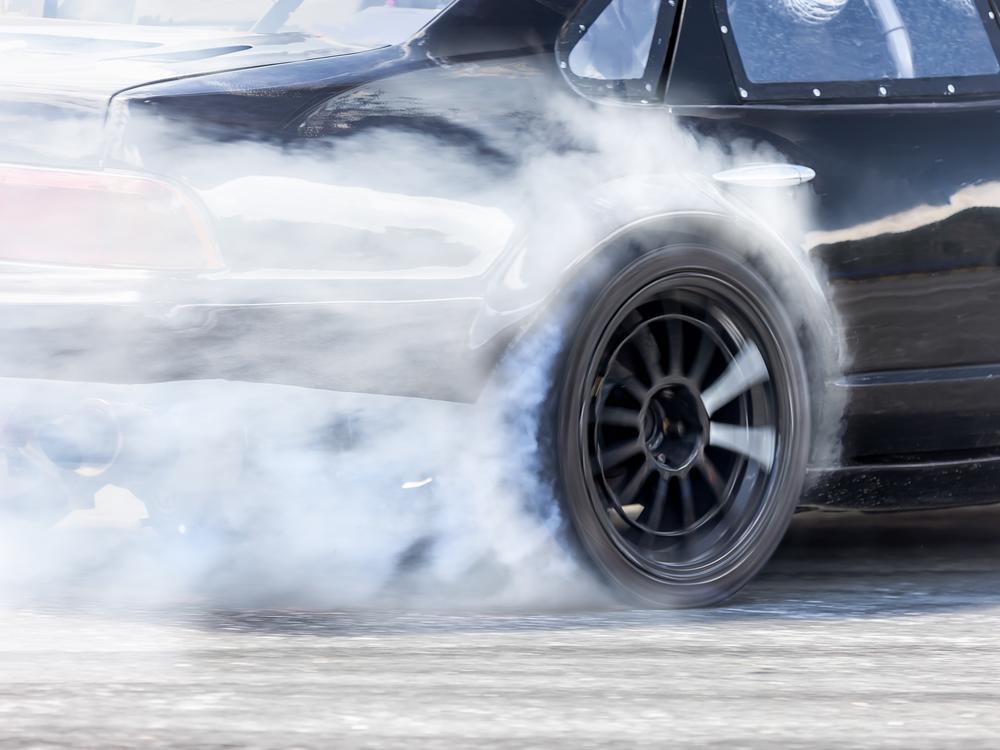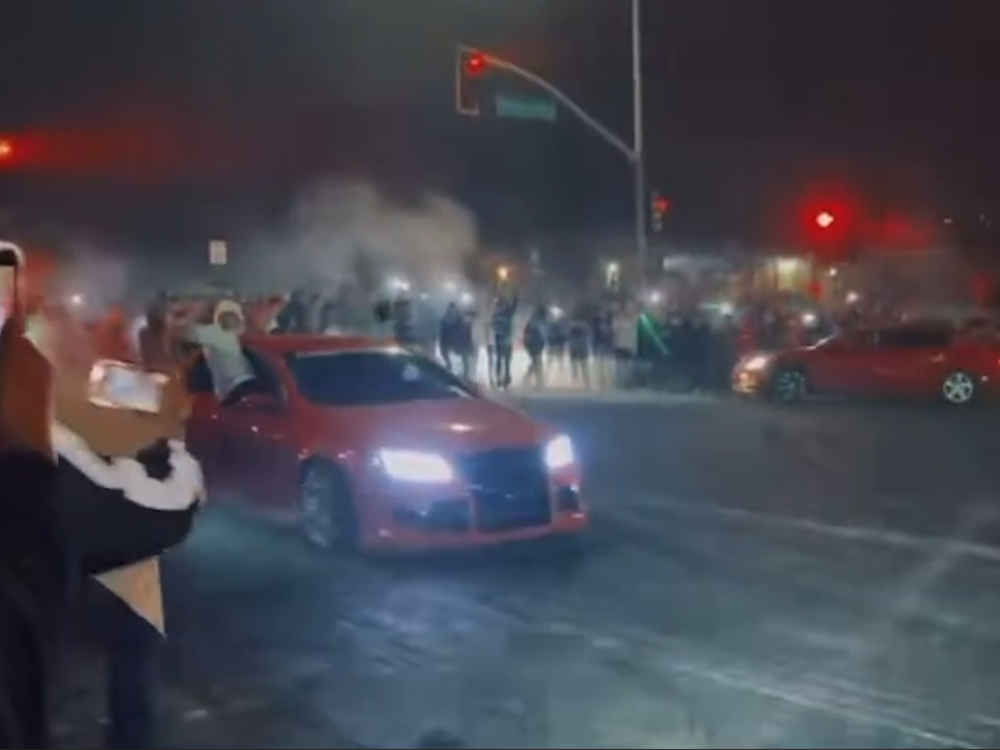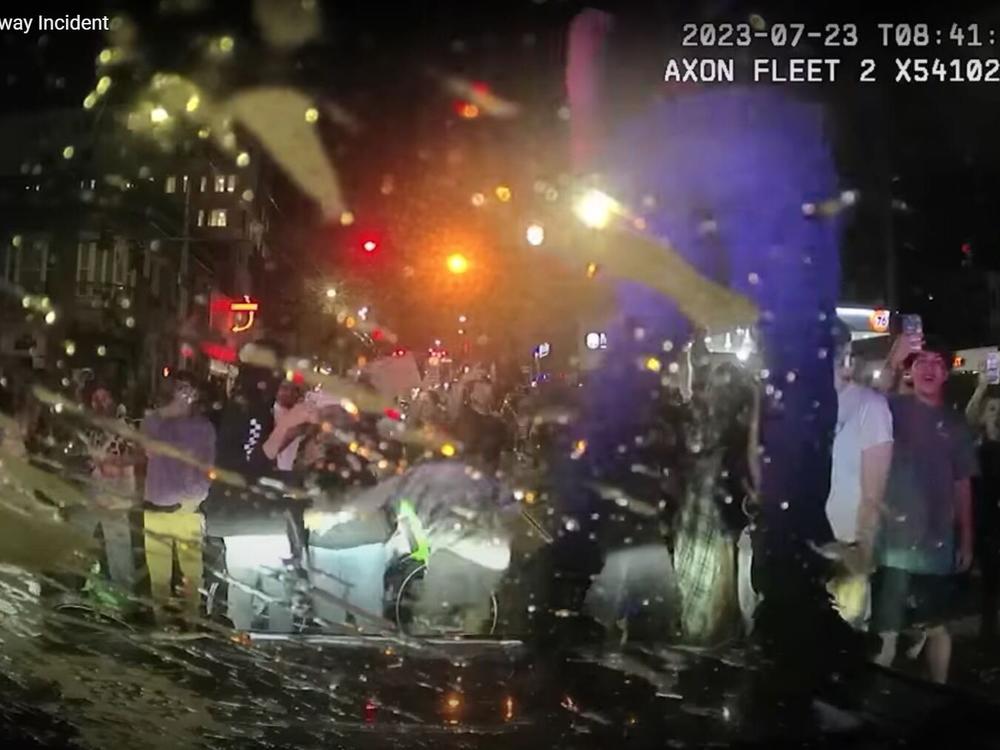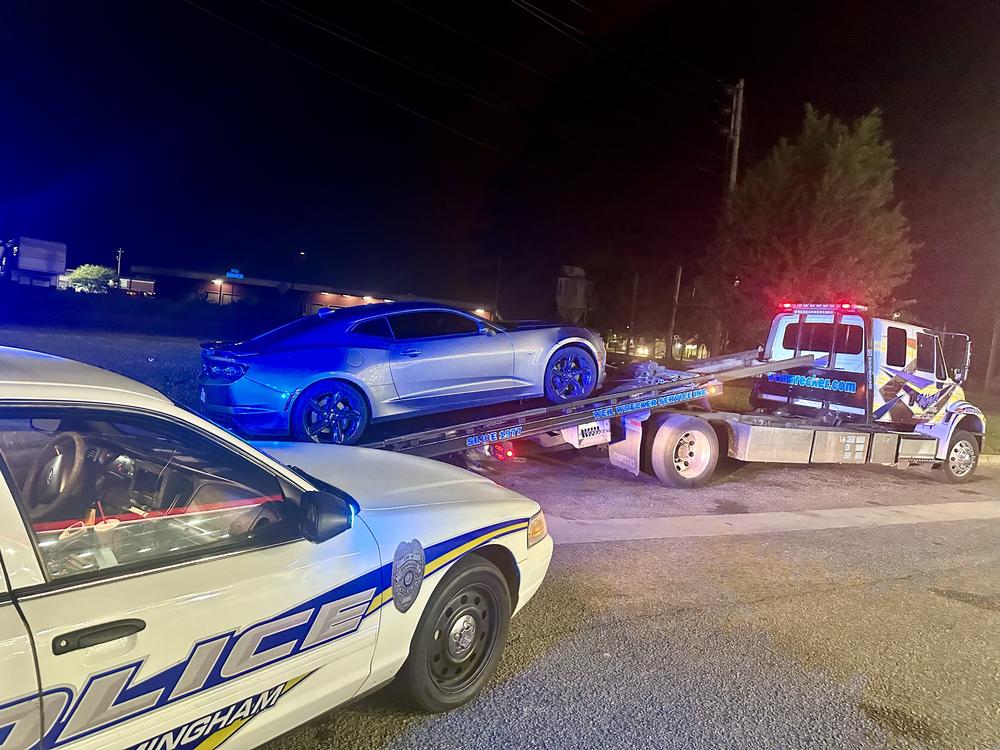Section Branding
Header Content
As sideshows gain popularity, police try a range of tactics to stop them in their tracks
Primary Content
Depending on where you live, you may have already heard of street takeovers: impromptu events, usually at night, in which drivers of muscle cars take turns doing donuts in intersections for cheering crowds.
In Alabama, the police refer to it as "exhibition driving." Birmingham officer Mark Jones says it's hard to miss.
"You can see the smoke from them burning their tires from several blocks away," he says.
Police say the phenomenon grew during the pandemic, but it isn't new. Filmmaker Yakpasua Zazaboi encountered it 25 years ago as a young man in Oakland. Californians call the events "sideshows," and he says it helps to understand the original slang.
"When you see young fellas pulling up in their cars and they're trying to look cool," he says, "the way that you kind of lean back and towards the side -- it was generally called 'sidin.' "
And he says the sideshow is just a show of show-offs. People showing off their souped up cars, along with elements of style and fashion. He says it was "love at first sight" for him.
"[It was] hundreds if not thousands of black faces, all getting along together, all having fun in the middle of the night," he says.
But sideshows also disrupt traffic, disturb neighbors and endanger lives. Spectators make a game of crowding in as close as they can around the spinning cars, and the resulting collisions are prime viewing on social media.
"We've had instances where people have been hit and killed, people have been hit and injured, people have been run over," says Birmingham Police Deputy Chief Michael Pickett. The problem in his city got so bad, this spring he launched a special operation dubbed "Knight Rider" after the 1980s era crime series.
"It was a fun show back in the day," Pickett says. "But yeah, that's where the name came from." Birmingham's version of Knight Rider involves not a talking car, but data. The department mapped out where the street takeovers are likely to take place and installed rubber speed bumps.
"We'd [also] preemptively deploy one or two marked units to that location with blue lights on," he says, which he says tends to keep joyriders from congregating.
But once a sideshow does get started, responding police say it's not easy to disperse.
"Turn on your lights and hope for the best," says Officer Jones. "Sometimes they stick around ... They try to bait us into taking some kind of enforcement action or chasing them so that they can show the video online on their channel for likes and views."
While some drivers want to provoke a chase, spectators may also turn on the police. Last summer in Seattle, a dashcam video captured a close-up view of sideshow spectators climbing on the hood and forcing the officer to retreat.
Some jurisdictions are trying harsher penalties. Alabama has increased penalties for the crime of "exhibition driving," allowing police to arrest drivers and impound cars. Deputy Chief Pickett says they're also arresting more people for other offenses committed at the shows, including for gun and drug crimes. In May, the city passed an ordinance allowing police to arrest spectators. Since the operation began, police have impounded 26 vehicles and seized 20 guns.
In Seattle, the city attorney has proposed a new $500 fine for street racing and sideshows. A ticket can be sent to the car's registered owner after the fact using police dashcam video as evidence, which could allow officers to avoid a dangerous high-speed chase.
But the most immediate results may come from simply towing the cars. In February, the sheriff's office in San Joaquin County, California impounded an astonishing 88 cars from a single sideshow. Sheriff Patrick Withrow then posted a video assuring the cars' owners that he was in no hurry to release them.
"Your cars will stay with us," he said in the video, "until the district attorney has adjudicated your case. And then we'll determine whether your car is a public nuisance and whether it will be destroyed or not."
The police crackdowns don't impress Zazaboi. He quit participating in sideshows years ago, opting instead to document them on video.
He's opposed to sideshows in neighborhoods, which he says are unfair to residents and unnecessarily dangerous. But he says it's practically impossible to stamp out an activity that has such a strong appeal to some younger people.
"It's the most exciting thing for that age range," he says. "The most exciting adrenaline you've ever had in your life."
A smarter approach, he says, would be to treat sideshows as a nascent motorsport, along the lines of early stock car racing with its roots in Prohibition-era bootlegging.
"It's not as easy, obviously, to just open up a parking lot and say, 'Hey, let's do this.' There's a lot more involved," Zazaboi says. But he thinks it should be part of a long-term strategy.
"There's a huge opportunity to connect the sideshow participants with a system that involves the same type of regulation and accountability as professional motorsports," he says, ultimately to find a way for show-off drivers to keep showing off more safely.




